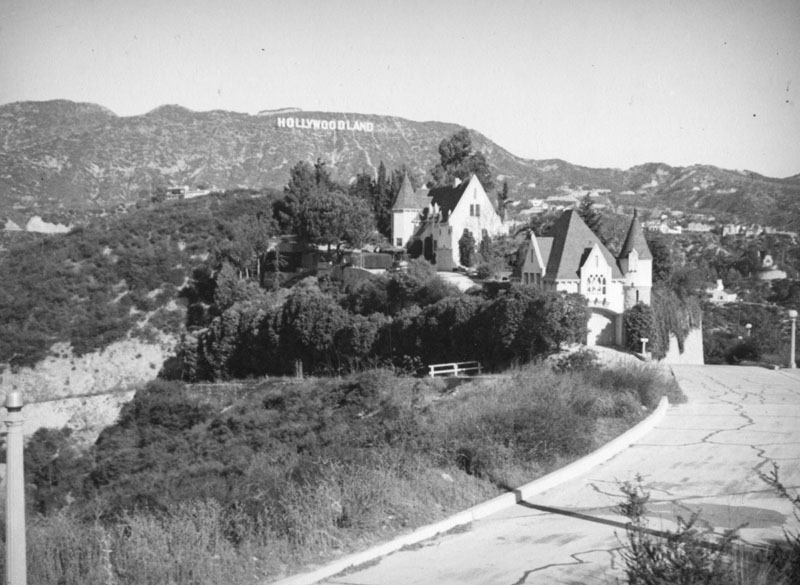
Hollywoodland sign, c. 1938. Photograph by Herman J. Schultheis. Herman J. Schultheis Collection, Los Angeles Public Library.
• The invention of the department store: “Between 1831 and 1870, Parliament passed almost 200 acts to improve local markets, creating regulations on the use of land in central cities to improve the flow of commerce. In these years, many cities began erecting covered market halls, offering a central location for small-scale food retailers to set up shop. Bazaars built during these decades provided the same advantages for other kinds of sellers. By the middle of the century, Shaw and Wild write, London’s West End had become a ‘fashionable retail center’ with multiple bazaars.” (JSTOR Daily)
• A neighborhood in the shadow of the Hollywood sign. (Curbed)
• A journey through the life and works of Michel Foucault: “Taken as a whole, reading Foucault from start to finish is like reading the major works of Henry James consecutively as self-conscious historical fictions. It is a mildly disconcerting experience, seeing conscious evolutions and experiments in style; baroque, ornate, urgent, dyspeptic; the repetitions and modalities at various points and the stylized categorizations and oppositions—prudes and perverts, monsters and insanity, measures and tests, inquiries and examinations, bodies and boys, punishment, pleasure, asceticism, suicide; the going back over old themes in new ways; how the old becomes new but how the new can never entirely disown the old; the desire for both fidelity in the evocation of moods and worlds, but not necessarily strict historical accuracy, whatever that might in the end be taken to mean; and the desire to write all this up somehow as a history of the present.” (The Times Literary Supplement)
• Chris Kraus on Mary McCarthy, c. 1961. (Paris Review Daily)
• Two brothers push the boundaries of nature photography: “Richard and Cherry Kearton were foremost among the small coterie of British nature photographers working before the end of the nineteenth century. They took the first ever photograph of a bird’s nest with eggs, in April 1892, and three years later (with British Birds’ Nests: How, Where and When to Find and Identify Them) published the first nature book illustrated throughout with photographs. But their next project—photographing the birds themselves—would be fraught with difficulties. Richard Kearton noted that birds were so disturbed by human presence, the ‘great eye’ of the camera lens, and the click of the shutter, for it to be near impossible to obtain natural studies.” (Public Domain Review)
• A brief history of communist-themed posters. (Hyperallergic)